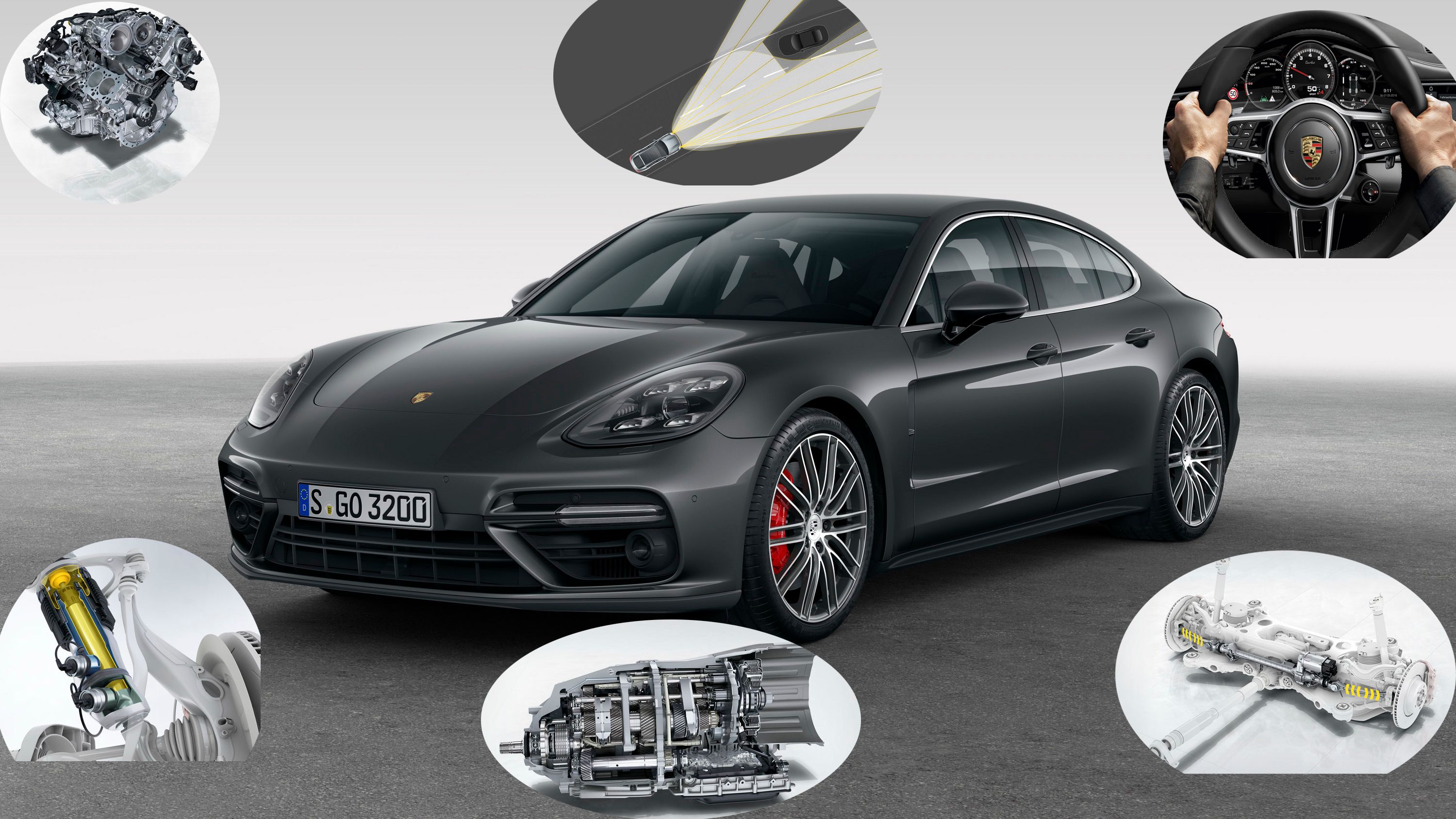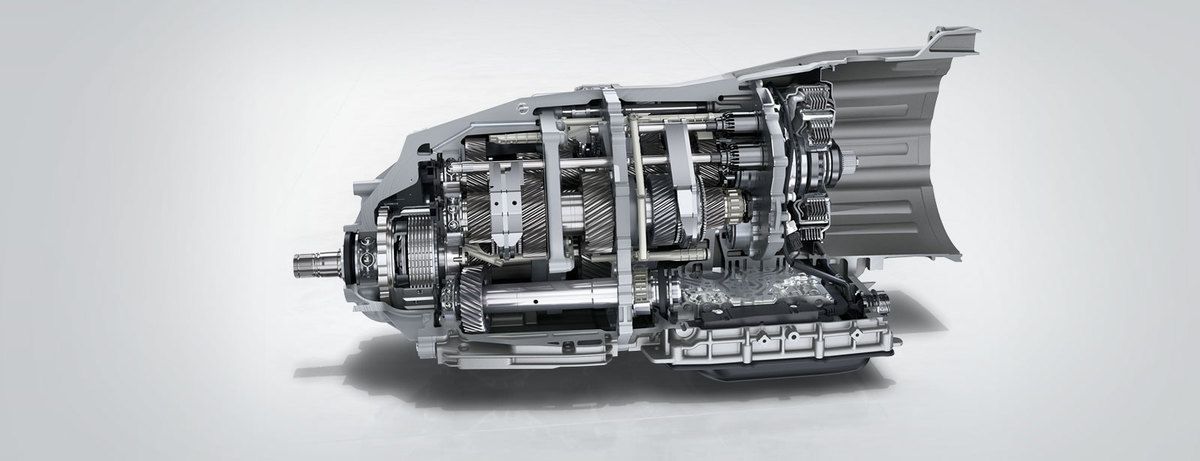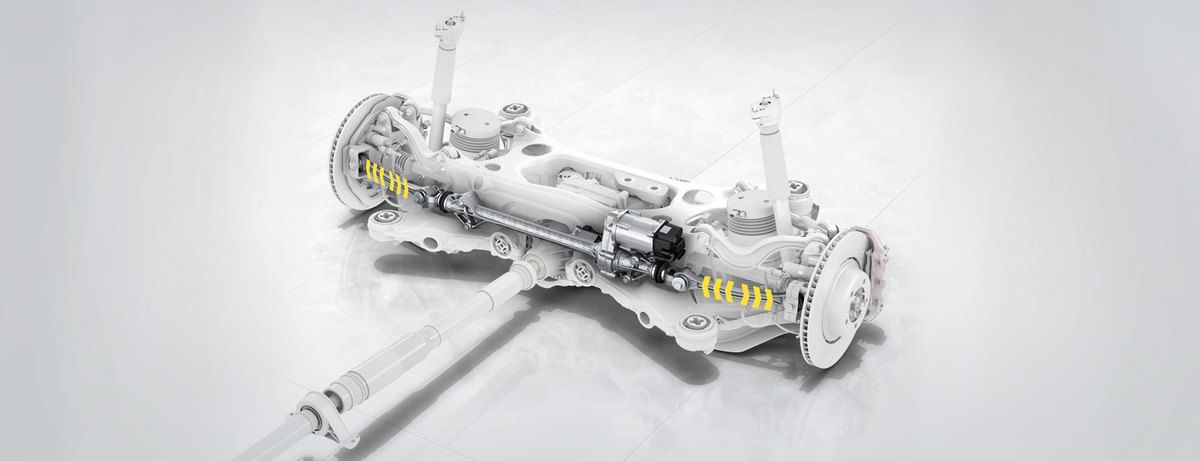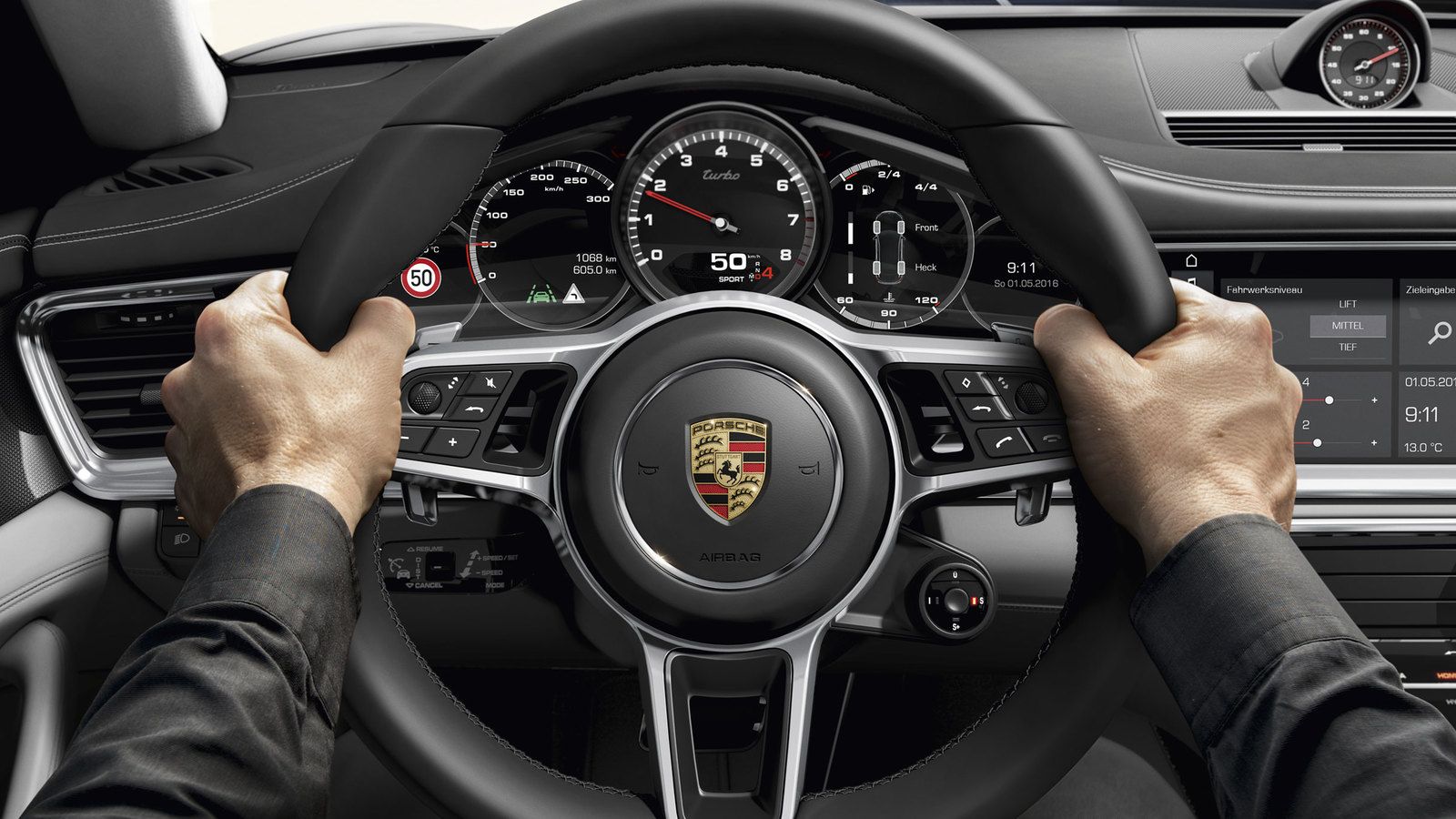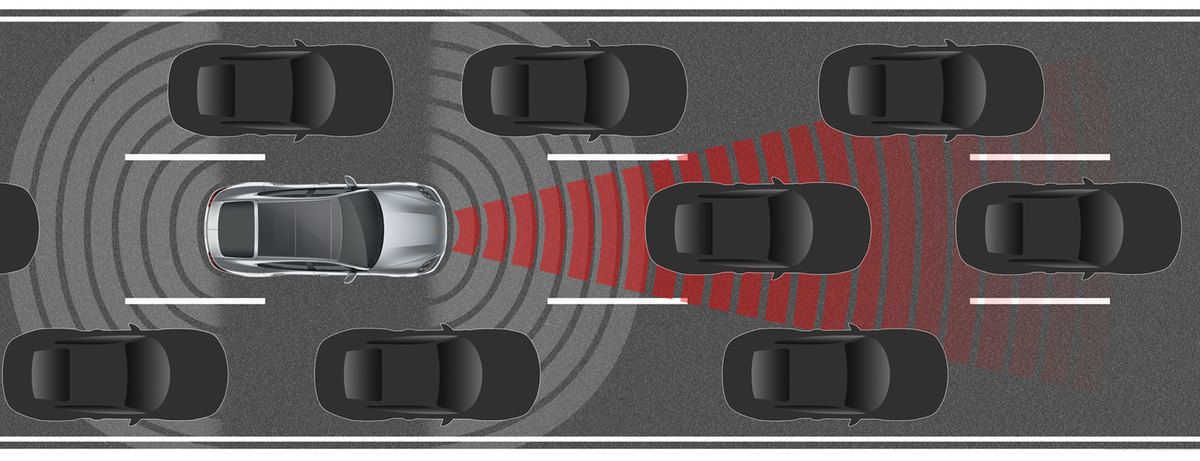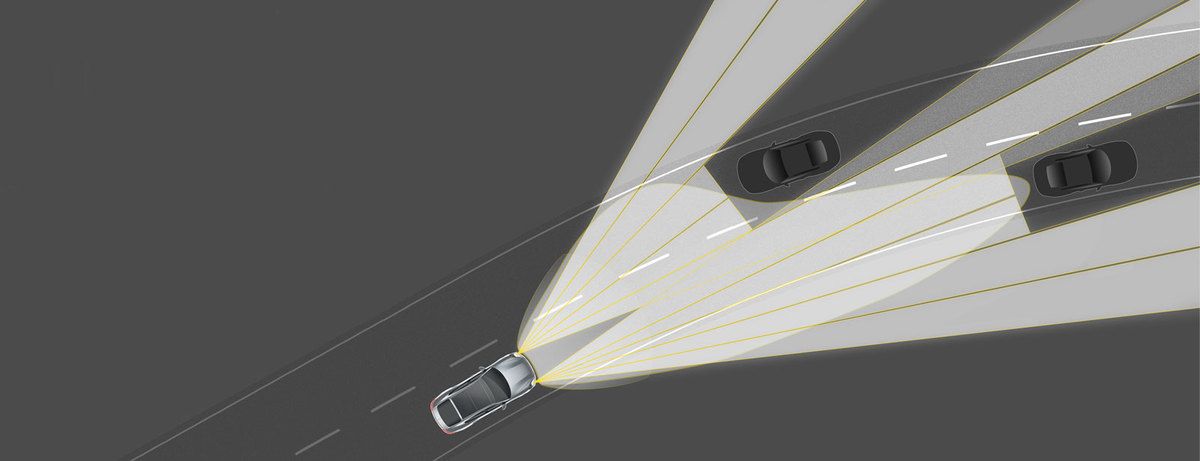Porsche just dropped details on the 2018 Panamera, a four-door that supposedly combines the comfort and practicality of a luxury sedan with the speediness of a thoroughbred sports car. All opinions aside, that kind of combination requires a good deal of technology to make it work correctly, and of course, Porsche says the new Panamera brings the goods. But the question is – does it really?
When it comes to innovation in the pursuit of lap times, Porsche certainly knows what it’s doing. But the Panamera is supposed to be more than a track monster. It’s also supposed to be a mile-munching GT car with some semblance of practicality, which can make for a rather tricky balancing act. Throw in a price tag of $101,040 for the base-model Panamera 4S, and you’re left with one very pricey jack-of-all-trades.
So then – what’s the new Panamera bring to the table in terms of technology, both in the cabin, and under the hood? Read on to find out.
Continue reading to learn more about the technology in the new Porsche Panamera.
Tech For Speed
First things first – this is a Porsche we’re talking about, so we’ve gotta start with the things that make it fast, most notably the updated engine lineup.
There will be three powerplants to choose from at launch, each of which comes in twin-turbocharged trim and is offered with both AWD and an eight-speed PDK transmission.
The base-model 4S gets a 2.9-liter V-6 that’s good for 440 horsepower at 5,650 rpm, and 406 pound-feet of torque at 1,750. That’s 20 horsepower and 22 pound-feet more than the previous model. Standstill to 100 km/h (62 mph) takes 4.4 seconds, while top speed is rated at just under 180 mph. Fuel economy improves by 11 percent.
Next up is the Panamera Turbo, which boasts a 4.0-liter V-8 that produces 550 horsepower at 5,750 rpm and 568 pound-feet of torque at 1,960 rpm (30 horsepower and 52 pound-feet more than before). The 0-to-100 km/h sprint takes 3.8 seconds, and top speed is 190 mph. Thanks to systems like adaptive cylinder control, which halves the number of active cylinders when cruising, efficiency is once again upped by roughly 11 percent.
Finally, there’s the 4S Diesel, which gets an eight-cylinder oil burner rated at 422 horsepower at 3,500 rpm and an impressive 627 pound-feet of torque at 1,000 rpm, making it the most powerful diesel engine ever used in a production Porsche model. The 4S Diesel is also ostensibly the fastest production diesel vehicle in the world, pegging 177 mph at the extreme top end. The diesel uses sequential turbocharging to keep the boost flowing, with the second snail coming online at 2,700 rpm.
Standout features among these three powerplants include turbos that are mounted inside the cylinder bank vee, which reduces piping and increases throttle response. Each model also gets multiple driving modes selectable via a steering-wheel-mounted rotary ring that’s inspired by the Porsche 918 Spyder, plus the optional Sport Chrono Package, which shaves two-tenths of a second from each respective 0-to-100 km/h time.
Keeping the shiny side up is a new three-chamber adaptive air suspension system, which is decked out in the usual alphabet soup of Porsche-branded driving aides (Porsche Active Suspension Management, Porsche Dynamic Chassis Control Sport, Porsche Torque Vectoring Plus, etc.). In back is rear axle steering that’s adapted from the 918 Spyder and 911 Turbo.
Making it all work together is “4D Chassis Control,” which monitors info coming from the various chassis systems and optimizes each for peak performance.
Tech For Control
With the go-fast bits covered, let’s look at the cabin. Porsche says it managed to “significantly” reduce the number of hard buttons and controls in the Panamera’s cockpit, replacing them with a slew of touch panels front to back. Mounted centrally on the dash is a 12.3-inch touchscreen, which is used for infotainment, navigation, and smartphone integration (Apple CarPlay is included). There’s also a new voice control system.
Behind the steering wheel are two 7-inch displays for driver info. Between these screens is a large, analogue tachometer.
Tech For Safety And Convenience
Just in case you get tired of actually driving your new Panamera, it comes equipped with something called Porsche InnoDrive. In addition to the standard adaptive cruise control functionality, InnoDrive also uses navigation data, radar, and video feeds to optimize throttle inputs, braking, and gear selection for the road ahead.
The new Panamera also gets something called Night Vision Assistant, which uses thermal imaging to pinpoint people and animals on the side of the road, warning the driver. There are also optional LED matrix headlights that can momentarily illuminate pedestrians outside the normal beam path.
Conclusion
All in all, it’s a solid bit of kit from Porsche. But here’s the thing – it’s hard to call any of it truly innovative. The engines are new and improved, but don’t really break the mold set by the first generation. The other speedy stuff (rear-axle steering, etc.) is pretty much the same equipment you get from a modern 911, while the rest of it comes from Audi.
Of course, that’s not all that surprising – take the best of both worlds, throw it into an updated package, and call it a day, right?
That said, I must make a single exception for the Porsche InnoDrive system. Stuttgart previewed the system last year, promising to introduce performance to the world of autonomous driving. Think your own robotic chauffeur with a penchant for track days. Whether or not the technology has actually reached its fullest potential remains to be seen, but when it comes to performance auto-pilot, I feel like the Panamera is a perfect fit.
What do you think?

